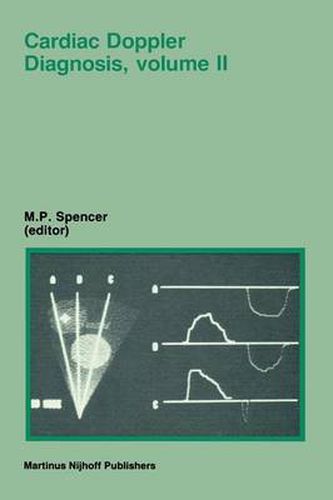Readings Newsletter
Become a Readings Member to make your shopping experience even easier.
Sign in or sign up for free!
You’re not far away from qualifying for FREE standard shipping within Australia
You’ve qualified for FREE standard shipping within Australia
The cart is loading…






This title is printed to order. This book may have been self-published. If so, we cannot guarantee the quality of the content. In the main most books will have gone through the editing process however some may not. We therefore suggest that you be aware of this before ordering this book. If in doubt check either the author or publisher’s details as we are unable to accept any returns unless they are faulty. Please contact us if you have any questions.
My personal interest in cardiac Dopplerarose from longexperience in diagnos- ing carotid artery disease using Doppler continuous wave ultrasound with fre- quencey spectral analysis. The work of Dr. Liv Hatle of Trondheim, who was then using analogue tracings for cardiac Doppler, inspired me to try CW Doppler combined with spectral analysis and high-pass filtering techniques. The results with this system, without benefit of standard echocardiography were so pro- ductive that a special instrument was produced by Carolina Medical Electronics for worldwide marketing. Our experience led to the development of an interna- tional symposium and training program. These symposia gave birth to the Inter- national Cardiac Doppler Society and Volume I of this book series. This second volume on Cardiac Doppler Diagnosis is an outgrowth of the successofVolume I and the excellent work of many clinical scientists. Doppler instrumentation continues to improve with integration ofboth contin- uous wave and pulsed wave Doppler with echocardiography. Color directional Doppler imaging techniques led byourJapanese colleagues is finding acceptance as a rapid screening method to find special regions of interest where more quantitative continuous wave with its quantitative capabilities of Doppler can be brought to bear. I wish to thank the many fine authors ofthese two volumes for their excellent efforts and, again, Marian Wienker for her prodigious assistance.
$9.00 standard shipping within Australia
FREE standard shipping within Australia for orders over $100.00
Express & International shipping calculated at checkout
This title is printed to order. This book may have been self-published. If so, we cannot guarantee the quality of the content. In the main most books will have gone through the editing process however some may not. We therefore suggest that you be aware of this before ordering this book. If in doubt check either the author or publisher’s details as we are unable to accept any returns unless they are faulty. Please contact us if you have any questions.
My personal interest in cardiac Dopplerarose from longexperience in diagnos- ing carotid artery disease using Doppler continuous wave ultrasound with fre- quencey spectral analysis. The work of Dr. Liv Hatle of Trondheim, who was then using analogue tracings for cardiac Doppler, inspired me to try CW Doppler combined with spectral analysis and high-pass filtering techniques. The results with this system, without benefit of standard echocardiography were so pro- ductive that a special instrument was produced by Carolina Medical Electronics for worldwide marketing. Our experience led to the development of an interna- tional symposium and training program. These symposia gave birth to the Inter- national Cardiac Doppler Society and Volume I of this book series. This second volume on Cardiac Doppler Diagnosis is an outgrowth of the successofVolume I and the excellent work of many clinical scientists. Doppler instrumentation continues to improve with integration ofboth contin- uous wave and pulsed wave Doppler with echocardiography. Color directional Doppler imaging techniques led byourJapanese colleagues is finding acceptance as a rapid screening method to find special regions of interest where more quantitative continuous wave with its quantitative capabilities of Doppler can be brought to bear. I wish to thank the many fine authors ofthese two volumes for their excellent efforts and, again, Marian Wienker for her prodigious assistance.